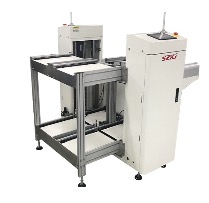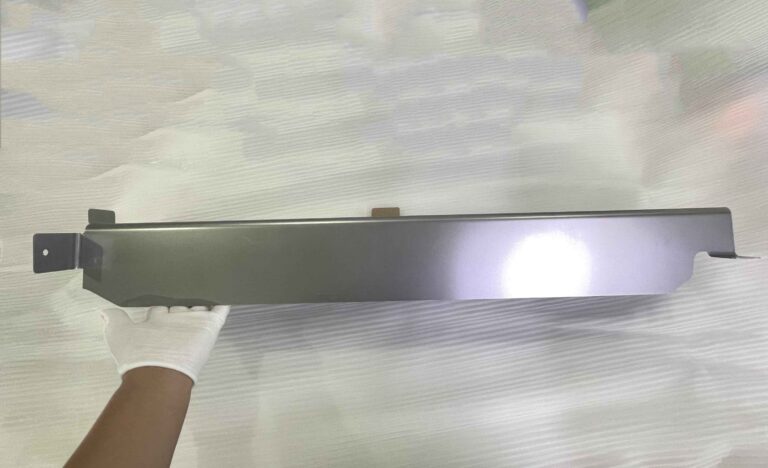SMT Manufacturing: Advancing Electronics for Tomorrow’s World
Home » SMT Manufacturing: Advancing Electronics for Tomorrow’s World
RECENT POSTS
Share:
- April 25, 2025
Table of Contents
Introduction
As industries push the boundaries of technological innovation, SMT manufacturing (Surface Mount Technology) has emerged as a critical enabler for modern electronics. This advanced technique streamlines the assembly of electronic components, allowing for compact designs, enhanced performance, and scalable production. From consumer electronics to medical devices, SMT manufacturing continues to drive progress across multiple sectors.
What is SMT Manufacturing?
SMT manufacturing is a process where electronic components are mounted directly onto the surface of printed circuit boards (PCBs). By automating placement and soldering, this method eliminates the need for drilled holes required in traditional through-hole assembly. The result is faster production times, smaller device sizes, and greater design flexibility, making SMT the preferred choice for advanced electronics.
Key Processes in SMT Manufacturing
1. Solder Paste Application
A stencil is used to apply solder paste onto designated areas of the PCB. This paste acts as both an adhesive and an electrical conductor during assembly.
Pick-and-Place Assembly
Automated pick-and-place machines precisely position surface-mounted components onto the PCB. These systems handle diverse components with speed and accuracy.
Reflow Soldering
The PCB assembly is passed through a reflow oven, where controlled heat melts the solder paste, bonding components securely to the board.
Quality Inspection
Automated Optical Inspection (AOI) systems, X-ray analysis, and functional testing ensure assembly accuracy and detect any defects.
Final Integration
After thorough testing, the PCB is integrated into products such as smartphones, automotive systems, or medical equipment.
Advantages of SMT Manufacturing
Space Optimization
SMT enables high-density component placement, allowing manufacturers to create smaller, lighter, and more portable devices.
Speed and Scalability
Automation ensures rapid production cycles, making SMT ideal for high-volume manufacturing.
Cost Efficiency
Reduced material waste and lower labor costs make SMT an economical choice for electronic assembly.
Reliability
Surface-mounted components are less susceptible to physical stress, vibration, or environmental factors, ensuring durability.
Design Versatility
SMT supports complex and innovative layouts, fostering breakthroughs in electronic engineering.
Applications of SMT Manufacturing
Consumer Electronics
From smartphones to wearable devices, SMT manufacturing powers sleek designs and advanced functionality.
Automotive Industry
SMT is integral to modern vehicles, supporting systems like advanced driver-assistance (ADAS), engine controls, and infotainment modules.
Medical Technology
SMT ensures precision and reliability in medical devices, including diagnostic imaging tools and portable health monitors.
Telecommunications
Networking equipment, 5G infrastructure, and IoT devices benefit from SMT’s scalable and efficient processes.
Industrial Automation
SMT powers IoT-enabled machinery and smart factory equipment, driving automation and connectivity in manufacturing.
Emerging Trends in SMT Manufacturing
Miniaturization
The demand for smaller, faster devices is driving innovations in micro-components and densely packed PCBs.
Flexible PCBs
Wearable and foldable devices are prompting SMT adaptations to support flexible and curved electronic designs.
Sustainability
Eco-friendly practices, such as lead-free soldering and energy-efficient production methods, are reshaping SMT for a greener future.
Industry 4.0 Integration
AI, robotics, and IoT technologies are revolutionizing SMT production lines, enhancing precision and efficiency.
Advanced Materials
Innovative solder alloys and heat-resistant substrates are expanding SMT’s capabilities for demanding applications.
Future Outlook for SMT Manufacturing
The role of SMT manufacturing in shaping the electronics industry is set to grow even further. As sectors like artificial intelligence (AI), renewable energy, and advanced robotics continue to evolve, SMT will play a vital role in assembling the sophisticated electronic components that power these technologies. Its integration with automation, sustainable practices, and innovative materials ensures SMT will remain a cornerstone of progress for decades to come.
Conclusion
SMT manufacturing is driving the future of electronics with its precision, efficiency, and versatility. Across industries, it has proven to be an indispensable process for assembling high-performance devices that meet the demands of a rapidly changing world. As technology advances, SMT manufacturing will continue to unlock possibilities, pushing the boundaries of innovation and redefining what’s possible in electronics production.
0


